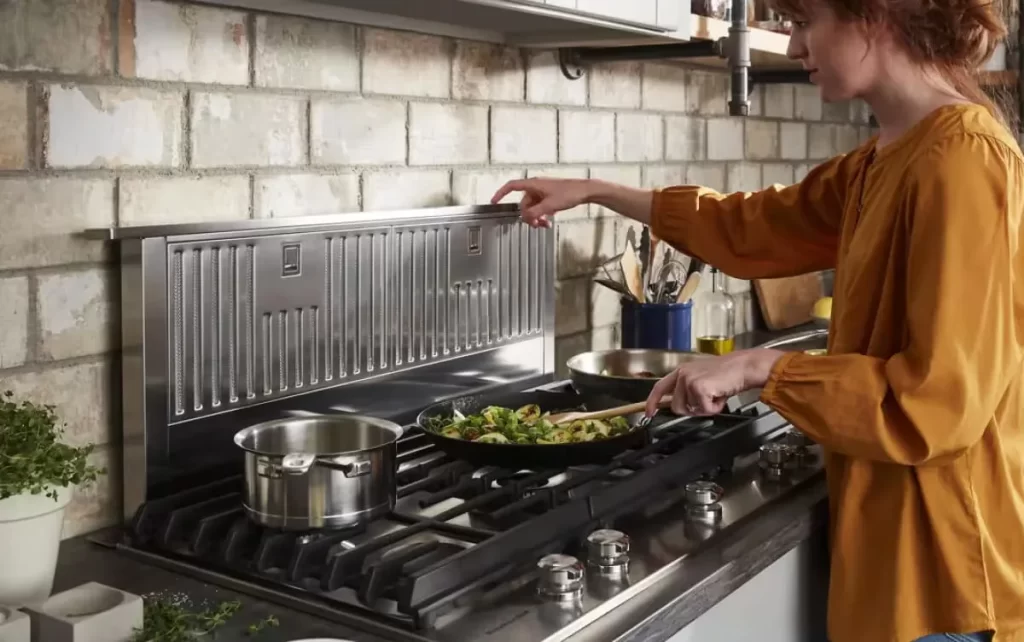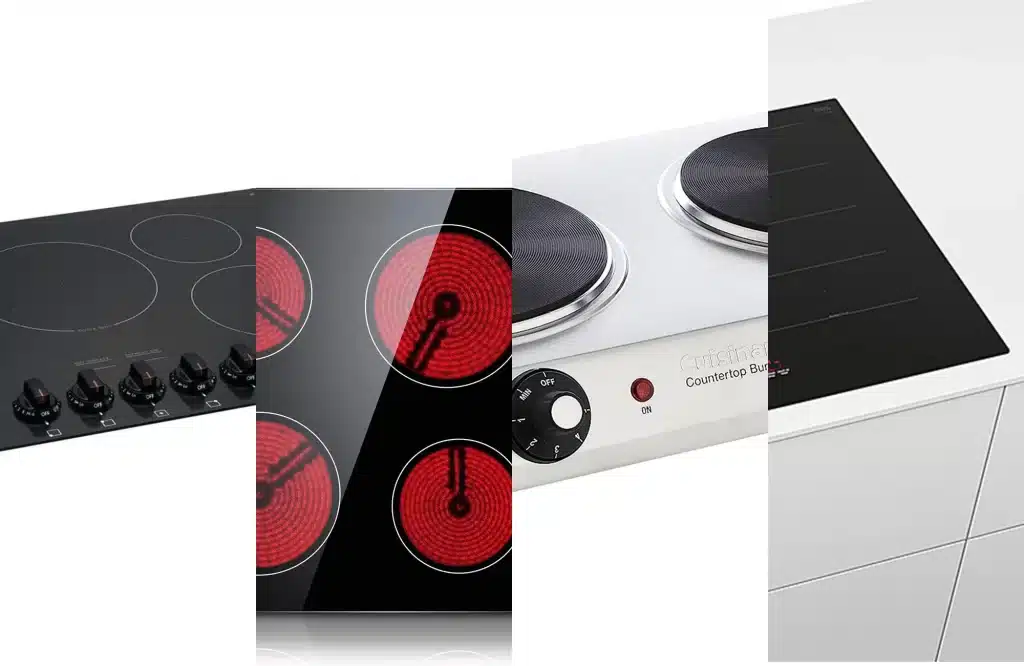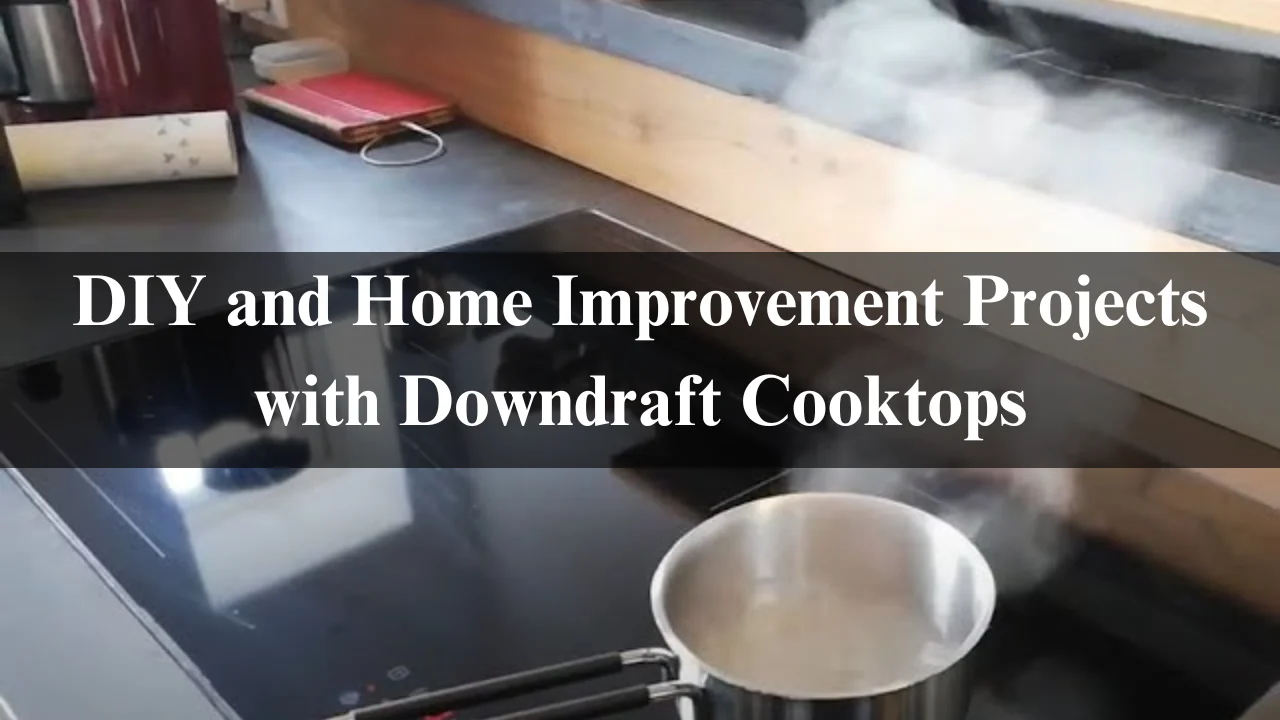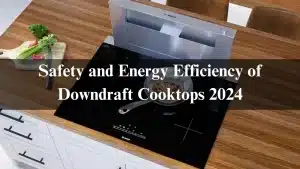Hey there! Did you know that downdraft cooktops are becoming super popular in kitchens? They’re stylish, efficient, and can even save space! Why should you consider one? In this article, we’ll dive into everything you need to know about downdraft cooktops, including user experiences, reviews, and how to choose the best one for your kitchen.
Table of Contents
Benefits of Using Downdraft Cooktops
Downdraft cooktops offer several practical benefits:
- Space-saving design: Without the need for a bulky hood, these cooktops free up space in smaller kitchens or open-plan layouts.
- Aesthetic appeal: They allow for a more streamlined kitchen design, making them a favorite for those who want a clean, modern look.
- Improved ventilation: By drawing smoke and odors downward, downdraft cooktops effectively control cooking byproducts, ensuring better air quality during and after meal preparation.
User Experience: What People Are Saying?
People who have tried downdraft cooktops often share their experiences online. Let’s see what they think!

Real-life Reviews
Many users love their downdraft cooktops! Here are some highlights from their reviews:
- Easy to Use: “It’s simple to operate. The controls are right where I need them!”
- Looks Great: “I love how sleek it looks! It really updates my kitchen.”
- Effective Ventilation: “I can cook bacon without my whole house smelling like it!”
Common Complaints
However, some people have faced challenges:
- Limited Power: Some users feel the ventilation could be stronger, especially for heavy cooking.
- Cleaning the Vents: Keeping the vents clean can be tricky. Regular maintenance is a must!
- Cost: Downdraft cooktops can be more expensive than traditional ones.
Comparing Downdraft Cooktops to Traditional Options
When thinking about a downdraft cooktop, it’s essential to compare it with traditional cooktops. Let’s take a closer look!

Ventilation
Traditional cooktops usually have overhead hoods. These can be powerful and great for large kitchens. However, downdraft cooktops save space and are often more visually appealing.
Cooking Performance
In terms of cooking, both types can perform well, but users have noted differences in heat distribution and response times. Downdraft cooktops can sometimes take longer to heat up compared to traditional ones.
Tips for Choosing the Right Downdraft Cooktop
Now that you know what a downdraft cooktop is and what users think, let’s go over how to choose the best one for your kitchen.

What to Look For
Here are some key factors to consider:
- Size: Make sure it fits your kitchen space. Measure your countertop before buying!
- Ventilation Power: Look for a model with strong ventilation if you do a lot of cooking.
- Control Options: Some cooktops offer touch controls, while others use knobs. Choose what feels best for you!
Installation Considerations
Installing a downdraft cooktop can be different from traditional cooktops. Here’s what you should know:
- Electrical Requirements: Ensure you have the right electrical setup for your new cooktop.
- Professional Help: It’s a good idea to have a professional install it for the best results.
How to Get Started with Downdraft Cooktops?
Ready to dive in? Here’s how to get started!
- Research Models: Check online reviews and product comparisons to find the best downdraft cooktop for your needs.
- Visit a Store: If possible, go to a store to see the cooktops in person. This helps you understand sizes and styles.
- Talk to Experts: Ask salespeople for their recommendations based on your cooking habits and kitchen layout.
Are Downdraft Cooktops Right for You?
Downdraft cooktops are ideal for people with limited space, or those looking for a more minimalist kitchen design. They work best in open kitchens, where an overhead hood would be disruptive. However, if you regularly cook with high heat or use all burners at once, a downdraft system might not be the best fit. It’s also important to consider installation challenges and costs before deciding.
Actionable Tips
- Watch Tutorials: Check YouTube for videos on how to install and use downdraft cooktops.
- Join Forums: Join online communities or forums where you can ask questions and share experiences.
- Try Before You Buy: Some stores allow you to test out cooktops. This is a great way to find what you like!
Related Articles:
Cooking with Downdraft Cooktops Pros And Cons 2024
Comparing Downdraft Cooktops To Other Cooking Options 2024
Safety and Energy Efficiency of Downdraft Cooktops 2024
Conclusion
In conclusion, best downdraft cooktops are a fantastic option for modern kitchens. They offer unique benefits, like saving space and keeping your kitchen fresh. While user experiences vary, many people enjoy their sleek designs and effectiveness.
So, what do you think? Are you ready to explore the world of downdraft cooktops? You’ve got this!
Key Takeaways
- Downdraft cooktops pull air down, helping keep kitchens smoke-free.
- Users love their sleek design and ease of use, though some mention limited power.
- When choosing one, consider size, ventilation, and controls.
FAQs
How does a downdraft cooktop compare to a regular cooktop with an overhead hood?
Downdraft cooktops eliminate the need for overhead ventilation by pulling air downward. They save space but may struggle with heavy-duty cooking.
Are downdraft cooktops suitable for small kitchens?
Yes, downdraft cooktops are ideal for small kitchens as they remove the need for a bulky hood, freeing up space.
What is the average cost of a high-quality downdraft cooktop?
Prices typically range from $1,500 to $3,000, depending on brand, size, and features.
How often should the filters in a downdraft cooktop be cleaned?
Filters should be cleaned regularly, ideally after every heavy cooking session, and are usually dishwasher-safe.
Can downdraft cooktops be used for high-heat cooking methods like searing?
While possible, many users report that downdraft systems may struggle with high-heat cooking as they don’t capture smoke and odors as efficiently as overhead hoods.




